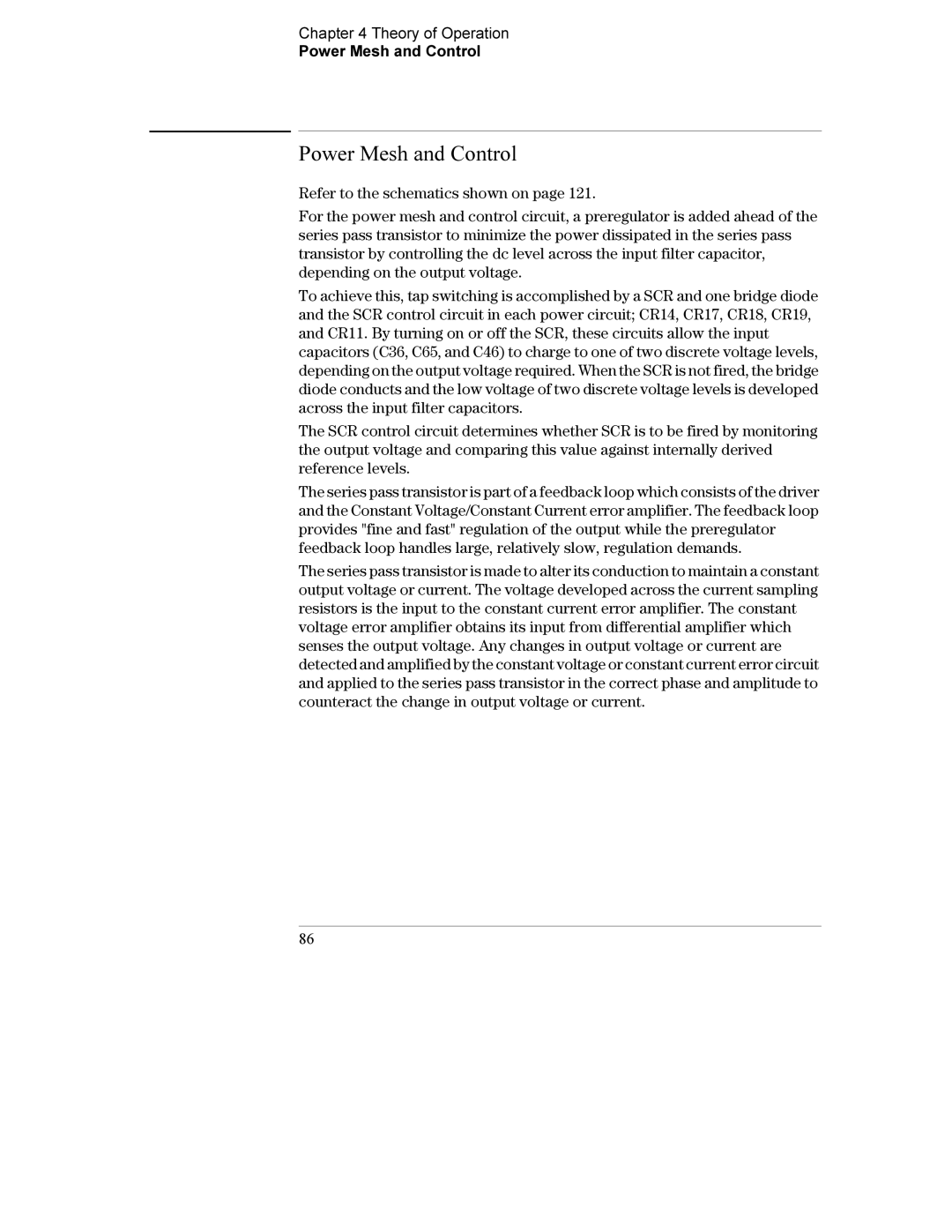
Chapter 4 Theory of Operation
Power Mesh and Control
Power Mesh and Control
Refer to the schematics shown on page 121.
For the power mesh and control circuit, a preregulator is added ahead of the series pass transistor to minimize the power dissipated in the series pass transistor by controlling the dc level across the input filter capacitor, depending on the output voltage.
To achieve this, tap switching is accomplished by a SCR and one bridge diode and the SCR control circuit in each power circuit; CR14, CR17, CR18, CR19, and CR11. By turning on or off the SCR, these circuits allow the input capacitors (C36, C65, and C46) to charge to one of two discrete voltage levels, depending on the output voltage required. When the SCR is not fired, the bridge diode conducts and the low voltage of two discrete voltage levels is developed across the input filter capacitors.
The SCR control circuit determines whether SCR is to be fired by monitoring the output voltage and comparing this value against internally derived reference levels.
The series pass transistor is part of a feedback loop which consists of the driver and the Constant Voltage/Constant Current error amplifier. The feedback loop provides "fine and fast" regulation of the output while the preregulator feedback loop handles large, relatively slow, regulation demands.
The series pass transistor is made to alter its conduction to maintain a constant output voltage or current. The voltage developed across the current sampling resistors is the input to the constant current error amplifier. The constant voltage error amplifier obtains its input from differential amplifier which senses the output voltage. Any changes in output voltage or current are detected and amplified by the constant voltage or constant current error circuit and applied to the series pass transistor in the correct phase and amplitude to counteract the change in output voltage or current.
86
